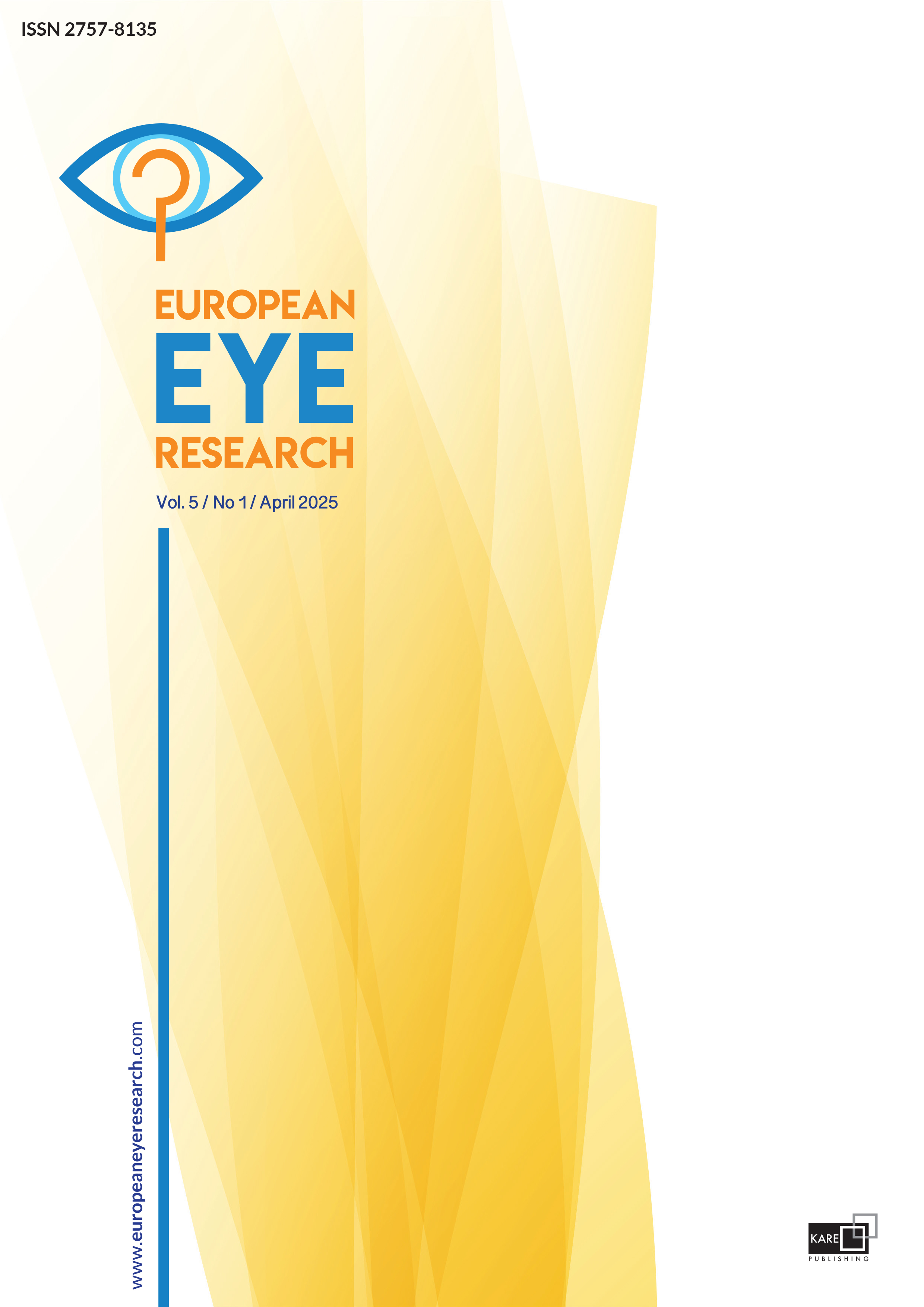

Evaluation of lacrimal punctum and tear meniscus in dry eye syndrome: a comparative spectral domain OCT study
Murat Kasikci1, Özgür Erogul2, Hamidu Hamisi Gobeka2, Cansu Kaya31Ophthalmology Clinic, Muğla Education and Research Hospital, Mugla, Türkiye2Department of Ophthalmology, Afyonkarahisar Health Sciences University, Faculty of Medicine, Afyonkarahisar, Türkiye
3Ophthalmology Clinic, Muğla Sitki Kocman University School of Medicine, Mugla, Türkiye
PURPOSE: The aim of the study was to evaluate lacrimal punctum and tear meniscus using anterior segment-optical coherence tomography (AS-OCT), and compare the results among dry eye syndrome (DES) patients with aqueous deficient dry eye (ADDE) and evaporative dry eye (EDE) subtypes, and healthy individuals.
METHODS: We included 62 eyes of 31 ADDE subtype DES patients (Group 1), 62 eyes of 31 EDE subtype DES patients (Group 2), and 62 eyes of 31 healthy individuals (Group 3). All participants underwent a thorough ophthalmic examination, including a non-anesthetic Schirmer test for DES confirmation and detailed assessment of the cornea, as well as the conjunctiva, globe, and tear film for increased reflex secretion. The lacrimal punctum and tear meniscus were then measured using a spectral domain OCT system with high-resolution scanning software.
RESULTS: Mean ages in Groups 1, 2, and 3 were 49.06±11.24, 46.74±11.68, and 45.48±9.17 years, respectively, (P=0.420). DES patients had significantly lower non-anesthetic Schirmer test (P<0.001), outer punctal diameter (P=0.012), punctal depth (PD) (P<0.001), tear well depth (P<0.001), and punctal reserve (P<0.001) than Group 3. Group 1 had significantly lower Schirmer test (P<0.001), PD (P=0.005), and tear well depth (P=0.003) than Group 2. Tear meniscus height (P=0.463), area (P=0.891), and angle (P=0.266) did not differ significantly among groups, nor did IOP (P>0.05).
CONCLUSION: AS-OCT could potentially be a useful optical diagnostic technique for in vivo lacrimal punctum microstructural and tear meniscus quantitative evaluation. It could also enable DES classification, leading to a better understanding of the underlying pathology and the avoidance of unnecessary tear drops.
Manuscript Language: English



